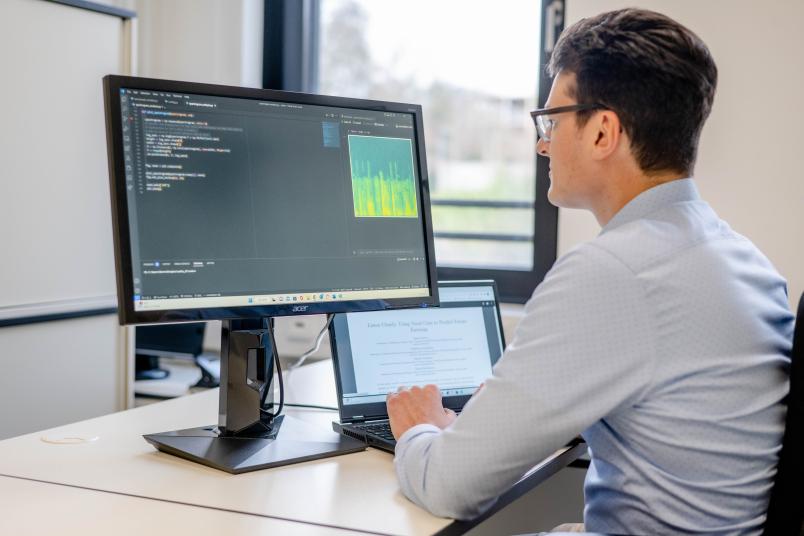Economics
This is what executives inadvertently reveal
Their voice provides an indication of the profit expectations of enterprises. A team from Bochum is using artificial intelligence to investigate this phenomenon.
Company executives know more than they say – and this is exactly what analysts and investors want to know. An interdisciplinary team from the economics and engineering departments at Ruhr University Bochum, Germany, has shown that all you have to do is listen very closely: the voice unintentionally reveals information that can be used to predict the expectation of profit or loss for the following year more effectively than conventional methods based on published figures. To this end, the team led by Dr. Doron Reichmann, head of the FAACT research group (FAACT stands for Finance/Accounting/Auditing/Controlling/Taxation) at the Faculty of Management and Economics, deployed the method of machine learning. With the help of their models, the researchers managed to beat the usual capital market returns by nine percentage points. They published their study online on the SSRN platform on 28 Decembre 2022.
No-one is in complete control of their voice
When executives talk about their company’s performance and profit expectations, they are not one hundred per cent transparent: they want to present things in a favourable light, especially to potential investors and analysts. The latter, on the other hand, want as realistic a picture as possible and read between the lines. “Savvy analysts seek personal contact with executives in order to pick out moods from the conversation,” says Doron Reichmann. “They know that the voice reveals information. The formation of language is such a complex process that no-one is in complete control of their voice.”
However, it’s not easy to describe exactly what they are looking for. “Machine learning is particularly useful when we, as humans, are unable to define precise rules for certain processes,” says Charlotte Knickrehm from the Chair for Industrial Sales and Service Engineering. “For example, we can infer emotions from voices. It’s quite an easy thing to do – but we don’t know how, exactly, we do it.” She and her colleagues use machine learning techniques to predict from statements made by executives whether their company will make a profit or a loss in the following year.
More than 8,000 recordings
To this end, they used over 8,000 recordings made at earnings conferences calls, where executives discuss the financial performance of their companies with investors and analysts. These audio files were converted into spectrograms that visualise the acoustic information. These spectrograms serve as input into a neural network that is able to recognise patterns in images. They trained it with data from 2015 to 2020, feeding it with both the spectrograms and the information on whether the respective company had made a profit or loss in the year following the recording.
And it worked: AI was six to nine percentage points more accurate in predicting whether a company would make a profit or loss in the following year than conventional models based on the company’s published figures.
Combination of analyst estimates and AI is most effective
In the second step, the researchers combined their predictions with analysts’ estimates of profit respectively loss. “This improved the predictions considerably once again,” points out Doron Reichmann. “The combination was 40 per cent more accurate than the analysts’ estimate alone. This means that if an analyst is ten per cent better at estimating whether a company will make a profit or loss than a coin toss, the combination with our method is 14 per cent better. That doesn’t sound like much, but it makes a lot of difference in financial markets.”
In order to assess whether they would also have earned more money on the stock market by applying their method, the researchers simulated a stock purchase with a good forecast through their models. The result: “In the years under review, we would have beaten the capital market by about nine percentage points,” says Doron Reichmann.

